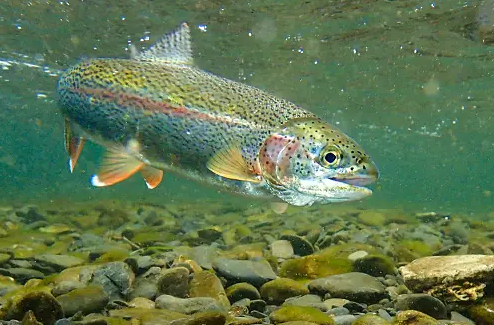How to Fish for Trout - Ultimate Guide

Anatomy
Trout are freshwater fish belonging to the Salmonidae family. They have streamlined bodies, typically with colorful patterns of spots and markings. Their fins are usually well-developed, and they have a small adipose fin located between the dorsal fin and tail.
Size and Weight
Trout species vary widely in size, with some reaching lengths of only a few inches while others can grow to several feet. Common species include rainbow trout, brown trout, and brook trout, which can weigh anywhere from a few ounces to several pounds depending on their age and environment.
Habitat
Trout inhabit a variety of freshwater environments, including rivers, streams, lakes, and ponds. They prefer clear, cold water with plenty of oxygen and hiding spots such as rocks, logs, and undercut banks. Different species of trout have specific habitat preferences, so it's essential to understand the habitat requirements of the species you're targeting.
Aggressiveness and Behavior
Trout can exhibit varying degrees of aggressiveness depending on factors such as water temperature, food availability, and spawning behavior. They are known for their cautious and skittish nature, making them challenging but rewarding targets for anglers. Trout are often most active during low light conditions, such as dawn and dusk, and may be less active during bright, sunny days.
Feeding Preferences
Trout are opportunistic feeders and will consume a wide range of prey, including insects, crustaceans, small fish, and even terrestrial organisms such as worms and insects that fall into the water. The specific feeding preferences of trout can vary depending on their size, habitat, and environmental conditions.
Fishing Techniques
Popular fishing techniques for trout include fly fishing, bait fishing, and lure fishing. Fly fishing involves casting lightweight artificial flies to imitate insects or other natural prey. Bait fishing typically involves using live bait such as worms, minnows, or insects rigged on hooks. Lure fishing involves casting artificial lures such as spinners, spoons, or plugs to entice trout to strike.
World Record Catch
The world record for the largest trout caught varies depending on the species. For example, the current world record for rainbow trout stands at 48 pounds, 0 ounces, caught in Alaska in 1970. The world record for brown trout is 40 pounds, 4 ounces, caught in Arkansas in 1992.
Ad One
Ad Two

